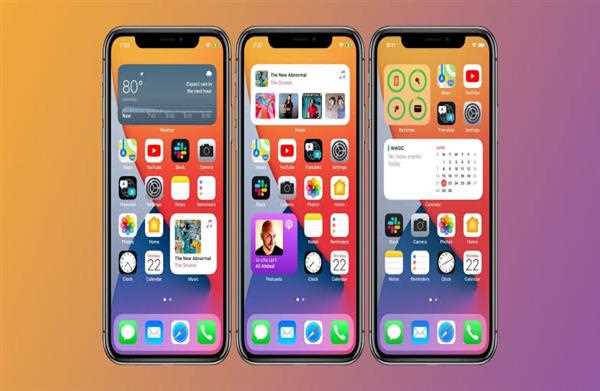Customizing the appearance and behavior of the home screen on an iPhone allows users to personalize their device and enhance their user experience. With iOS, Apple provides several customization options to arrange app icons, add widgets, create app folders, and more. Here's a guide on how to customize the appearance and behavior of the home screen on an iPhone:

1. Rearrange App Icons: To rearrange app icons on the home screen, simply tap and hold an app icon until it starts to jiggle. Then, drag the app icon to the desired location. You can also move an app to a different home screen page by dragging it to the edge of the screen.
2. Create App Folders: To create an app folder, tap and hold an app icon until it starts to jiggle, then drag it onto another app icon. This will automatically create a folder containing both apps. You can customize the folder name by tapping on the text field and typing a new name. To add more apps to the folder, simply drag and drop them into the folder.
3. Customize Home Screen Appearance: iOS offers several appearance customization options to change the look of the home screen. To access these options, go to Settings > Display & Brightness > Home Screen. Here, you can enable or disable "App Library Only," which removes app icons from the home screen and displays them in the App Library. You can also choose between the standard "Light" appearance or the "Dark" appearance.
4. Add Widgets: Widgets provide quick access to app information and functions right on the home screen. To add a widget, tap and hold on an empty space on the home screen until the apps start to jiggle. Then, tap the "+" icon in the top left corner. Select a widget size, swipe left or right to choose a widget, and tap "Add Widget" to place it on the home screen. You can drag and drop widgets to rearrange them.
5. Remove Widgets: To remove a widget, tap and hold on the widget until a menu appears. Select "Remove Widget" or tap the "X" button in the top left corner of the widget.
6. Smart Stack: The Smart Stack is a dynamic widget that intelligently displays relevant information based on your usage patterns. To add a Smart Stack, follow the same steps as adding a widget and choose the "Smart Stack" option. You can swipe up or down on the Smart Stack to view different widgets within it.
7. App Library: The App Library is a dedicated space that automatically organizes your apps into categories, making it easier to find and access them. To access the App Library, swipe right to the last home screen page. You can tap on a category or use the search bar to locate specific apps.
8. Hide Pages: If you have multiple home screen pages that you rarely use, you can hide them to streamline your home screen. To do this, enter the jiggle mode by tapping and holding on an empty space, then tap on the page indicator dots at the bottom of the screen. Uncheck the pages you want to hide and tap "Done" to save the changes.
9. Reset Home Screen Layout: If you want to revert to the default home screen layout, go to Settings > General > Reset. Tap on "Reset Home Screen Layout" and confirm your choice. This will remove any app rearrangements, folders, and added widgets, restoring the home screen to its original state.
By following these steps, you can easily customize the appearance and behavior of the home screen on your iPhone. Whether it's rearranging app icons, creating app folders, adding widgets, or utilizing the App Library, these customization options provide flexibility and personalization to make your iPhone's home screen suit your style and preferences.